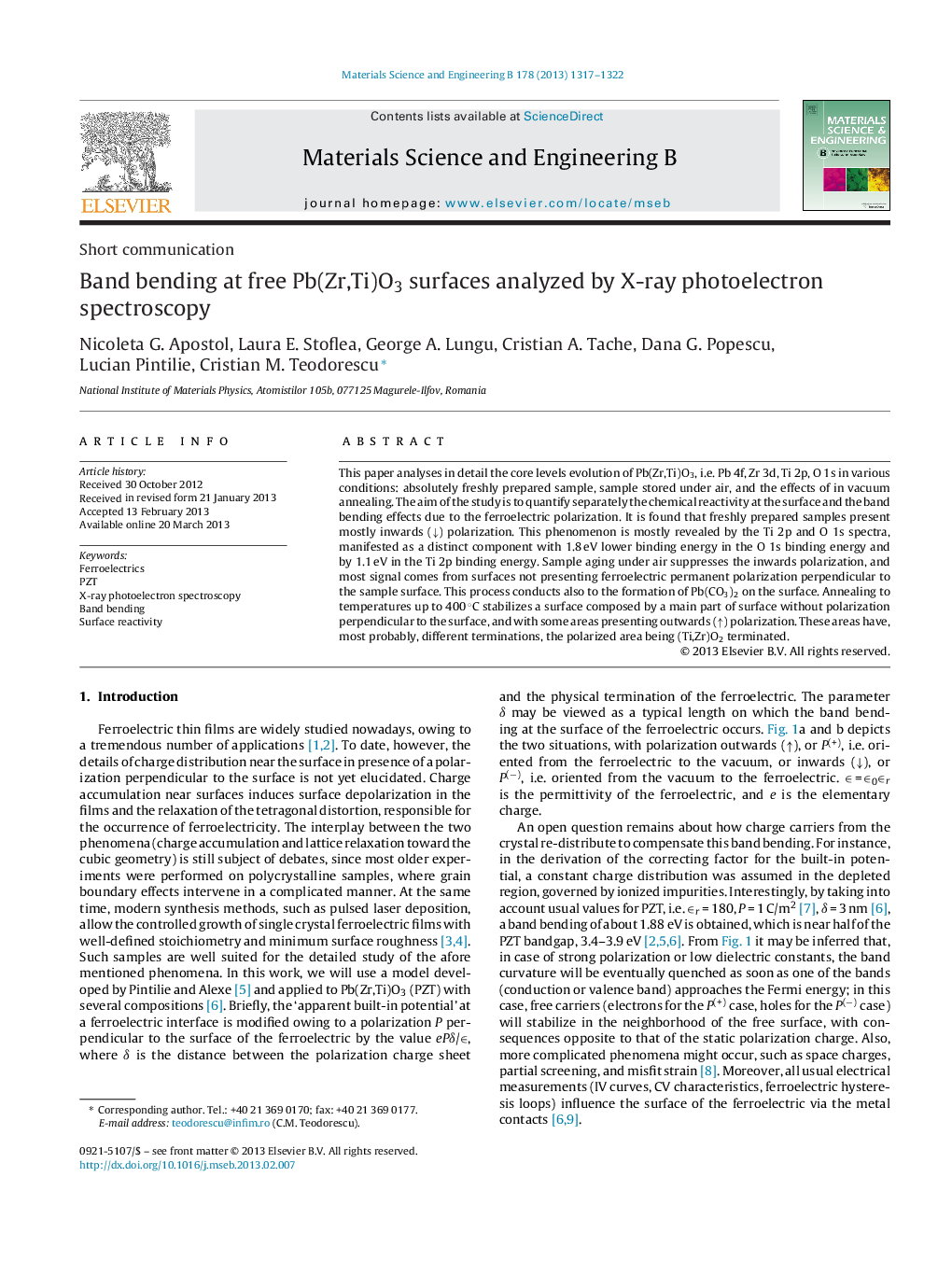| Article ID | Journal | Published Year | Pages | File Type |
|---|---|---|---|---|
| 1528852 | Materials Science and Engineering: B | 2013 | 6 Pages |
This paper analyses in detail the core levels evolution of Pb(Zr,Ti)O3, i.e. Pb 4f, Zr 3d, Ti 2p, O 1s in various conditions: absolutely freshly prepared sample, sample stored under air, and the effects of in vacuum annealing. The aim of the study is to quantify separately the chemical reactivity at the surface and the band bending effects due to the ferroelectric polarization. It is found that freshly prepared samples present mostly inwards (↓) polarization. This phenomenon is mostly revealed by the Ti 2p and O 1s spectra, manifested as a distinct component with 1.8 eV lower binding energy in the O 1s binding energy and by 1.1 eV in the Ti 2p binding energy. Sample aging under air suppresses the inwards polarization, and most signal comes from surfaces not presenting ferroelectric permanent polarization perpendicular to the sample surface. This process conducts also to the formation of Pb(CO3)2 on the surface. Annealing to temperatures up to 400 °C stabilizes a surface composed by a main part of surface without polarization perpendicular to the surface, and with some areas presenting outwards (↑) polarization. These areas have, most probably, different terminations, the polarized area being (Ti,Zr)O2 terminated.
